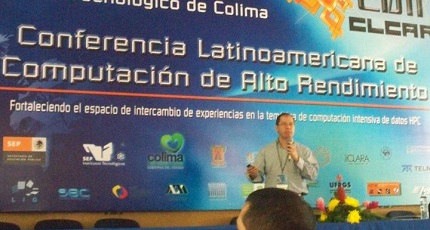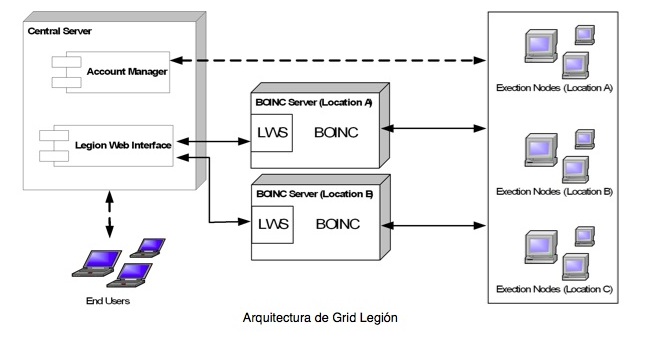News
- Tania Altamirano López
Genghis Rios, Department of Academic Computing PUCP: "Legion will take advantage of free resources to access a high computing power without further investment"
Expired
 Everybody connected and more power available for everybody, is the proposal of this initiative which seeks to enhance the creation of communities that optimize free and inactive periods of available computer equipment to be use in more demanding areas. Genghis Rios, project coordinator, refers to the importance of advanced networks to achieve this goal.
Everybody connected and more power available for everybody, is the proposal of this initiative which seeks to enhance the creation of communities that optimize free and inactive periods of available computer equipment to be use in more demanding areas. Genghis Rios, project coordinator, refers to the importance of advanced networks to achieve this goal.
What is the purpose of Legion Grid?
The project aims to stablish a distributed computing grid based on desktop computers using the technology of BOINC (Berkeley Open Infrastructure for Network Computing) and the system of supercomputing project management, Legion (http://legion.pucp.edu.pe/wiki), a web interface that provides investigators interaction with BOINC. For this, each institution member of RedCLARA can join the community by associating a computer lab at the Legion Grid, facilitating the formation of a distributed supercomputing system that will be available only to members of the community. The laboratory should have at least 20 computers dual core and 2GB of RAM and 30GB free space on hard disk, all connected to advanced networks.
Would be possible to implement this initiative without the support of advanced networks?
Each university can deployed internally its desktop grid based on BOINC, but its power will be limited to the number of nodes available within the campus. If the nodes of several universties are interconnected to a central BOINC server it will be obtain more accumulated power. The interaction of the nodes with the BOINC server will definitely be much faster on advanced networks than on commercial Internet, speeding up response time and the outcome of results. Currently RAAP, National Network for Research and Education in Peru, has a BOINC server and would be ideal that RedCLARA would have one too.
What is the importance of RedCLARA for its development?
In any grid solution is important the communication speed between servers and compute nodes, which is why RedCLARA could facilitate an optimum communications infrastructure. Furthermore RedCLARA also represents diverse communities of researchers who may be interested in using this new service.
What are the main benefits oobtain with the implementation of the project? How would this benefit the academic and scientific community?
Currently the vast majority of academic institutions in Latin America can not implement solutions of high performance computing for their high costs or they prefer to invest in other priorities, but most of them have modern computer rooms equipped with powerful computers whose power is sub- used for most of the time. The project intends the use of the free resources of these computers, and allow the access to high computing power without further investment, facilitating the entry of researchers into new research fields that require high performance computing.
How would be done the application process?, The website has informationa about an application in high energy physics in Peru, ¿In the future will be available to researchers in the region?
Applications are only accessed by researchers involved in the project development, and is a decision of the investigators to provide access to its application to other researchers, and Legion system allows it, encouraging collaborative work among researchers.
What has been the approchement with Spain for the project? Is expected to attend other advanced networks in addition to RedCLARA?
We have had an approach to the project Ibercivis (http://www.ibercivis.es/) with whom we were going to participate in a joint project for the diffusion of BOINC technology in Latin America, which would be funded by the ACI-PROMOTES contest of the Spanish government. Unfortunately did not win the contest, however the initiative to disseminate this technology is still standing by the excellent results we've had in the University.
What are the next steps in the work of Legion? What do you have planned for 2012?
Our first step was to develop a system that provides the researcher with a friendly interface to run their project in a desktop grid based on BOINC. Our second step is to develop a system that provides the administrator of the desktop grid a friendly interface that allows an easy and simple managemet of the resources of the grid associated nodes, which can be thousands if we think of a major project.
► Links available
Project wiki: http://wiki.pucp.edu.pe/legion
Server at RAAP: http://legion.raap.org.pe / http://wiki.pucp.edu.pe/gridlegion/





